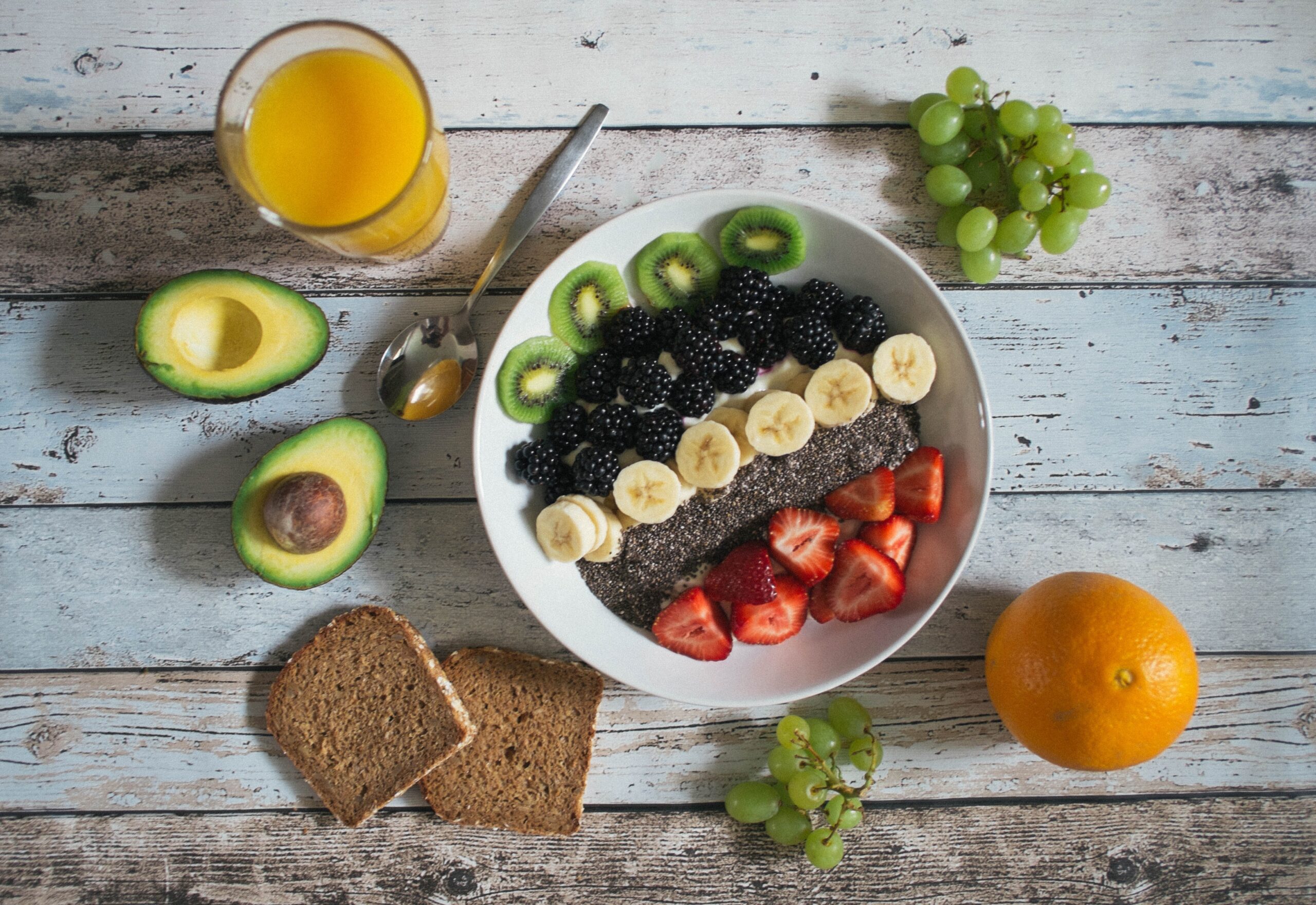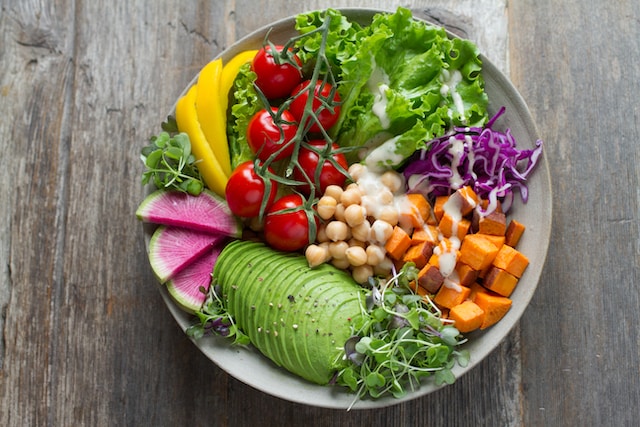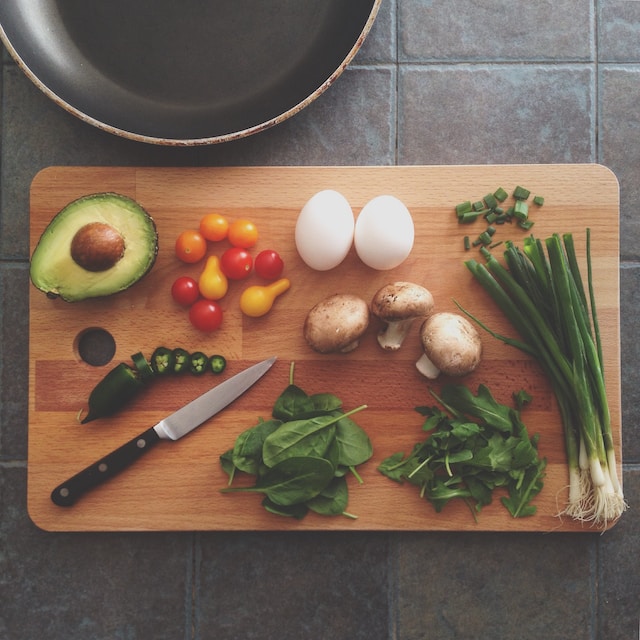In today’s fast-paced world, it’s easy to lose sight of what we eat and how much we consume. Portion control is a crucial aspect of maintaining a balanced diet and achieving your health and fitness goals. In this blog post, we will delve into the importance of portion control, provide practical tips for designing your plate, and explain the reasoning behind these choices.
The Significance of Portion Control:

Portion control plays a pivotal role in maintaining a healthy lifestyle for several reasons:
Calorie Management:
The primary reason to control portion sizes is calorie management. When we consume more calories than our bodies require, the excess is stored as fat, leading to weight gain. By controlling portions, we can regulate calorie intake and, in turn, maintain or achieve a healthy weight.
Balanced Nutrient Intake:
Proper portion control ensures a balanced intake of essential nutrients. A well-designed plate should include proteins, carbohydrates, healthy fats, vitamins, and minerals in appropriate proportions. This balanced approach helps meet nutritional needs while preventing overindulgence in any particular food group.
Blood Sugar Regulation:
Large portions of high-carbohydrate foods can cause rapid spikes and crashes in blood sugar levels. This can lead to increased hunger and cravings. Smaller, balanced portions help stabilize blood sugar, reducing the risk of energy crashes and unhealthy snacking.
Digestive Health:
Overeating can strain your digestive system, leading to discomfort, bloating, and even digestive disorders over time. Controlled portions promote better digestion and overall gastrointestinal health.
Designing Your Plate:

Now, let’s discuss how to design your plate for optimal portion control and overall well-being.
Fill Half Your Plate with Vegetables:
Vegetables are low in calories but rich in vitamins, minerals, and fiber. By dedicating half your plate to veggies, you ensure a nutrient-dense, low-calorie foundation for your meal.
Quarter of Your Plate for Protein:
Lean proteins like chicken, fish, tofu, or beans should take up a quarter of your plate. Protein helps with satiety and muscle maintenance.
Quarter of Your Plate for Carbohydrates:
Complex carbohydrates like whole grains, quinoa, or sweet potatoes can occupy the remaining quarter. These provide sustained energy and fiber for digestive health.
Healthy Fats in Moderation:
Incorporate healthy fats like avocado, olive oil, or nuts sparingly to add flavor and satiety to your meal.
Mindful Eating:
Eating slowly and savoring each bite can help you recognize when you’re satisfied, preventing overeating.
Reasoning Behind Portion Control:

Portion control works for several reasons:
Avoiding Overconsumption:
Smaller portions naturally lead to fewer calories consumed, helping with weight management.
Balanced Nutrition:
Controlling portion sizes ensures a balanced intake of macronutrients and micronutrients, promoting overall health.
Reduced Food Waste:
Smaller portions mean less food waste, benefiting both your wallet and the environment.
Improved Digestion:
Properly portioned meals are easier for your digestive system to process, reducing discomfort.
Tips for controlling portion :

Controlling portion sizes is essential for managing calorie intake and maintaining a healthy diet. Here are some practical tips to help you control your portions effectively:
Use Smaller Plates and Bowls:
One of the simplest ways to control portion sizes is to eat from smaller dishes. When you use smaller plates and bowls, it tricks your brain into thinking you’re eating more than you actually are.
Measure Your Food:
Invest in measuring cups, spoons, and a kitchen scale to accurately portion your food. This is especially useful when you’re cooking or serving meals at home.
Read Nutrition Labels:
Pay attention to serving sizes on nutrition labels. These labels provide information about the recommended portion sizes for various foods, making it easier to control your intake.
Divide Restaurant Meals:
When dining out, consider sharing an entrée with a dining partner or asking for a to-go container at the beginning of the meal to set aside half of your meal for later.
Practice Mindful Eating:
Slow down and savor each bite. Put your fork down between bites, and focus on the taste and texture of your food. This can help you recognize feelings of fullness before overeating.
Pre-Portion Snacks:
When you buy snacks in bulk, portion them into smaller containers or bags to avoid mindlessly munching from a large package.
Use Your Hand as a Guide:
Your hand can serve as a rough guide for portion sizes. For example, a serving of protein should be about the size of your palm, a serving of grains should fit in your cupped hand, and a serving of fats should be about the size of your thumb.
Be Aware of Liquid Calories:
Pay attention to portion sizes of beverages like sugary drinks, alcohol, and even fruit juices. These can add up quickly in terms of calories and sugar intake.
Plan Ahead:
Prepare meals and snacks in advance and portion them into individual containers. This prevents overeating by having readily available, properly sized portions.
Listen to Your Hunger and Fullness Signals:
Pay attention to your body’s cues for hunger and fullness. Eat when you’re hungry and stop when you’re satisfied, even if there’s food left on your plate.
Practice Portion Distortion Awareness:
Be mindful of portion sizes when dining out, as restaurant portions are often larger than what you need in one meal. Consider splitting an entrée or taking leftovers home.
Limit Buffet and All-You-Can-Eat Situations:
It can be challenging to control portion sizes in buffet settings. If you find yourself at a buffet, make a plan before you start eating and stick to it.
Use Technology:
There are many smartphone apps and websites that can help you track your food intake and portion sizes, making it easier to stay on track.
Designing your plate with portion control in mind is a powerful tool for achieving and maintaining a healthy lifestyle. By understanding the significance of portion control and following practical guidelines for meal composition, you can take control of your diet, support your overall health, and work towards your fitness goals. Remember that moderation and balance are key, and making mindful choices about what and how much you eat can lead to long-term well-being. Remember that portion control is not about deprivation but about making conscious choices to support your health and well-being. Over time, it can become a natural and sustainable part of your eating habits.



